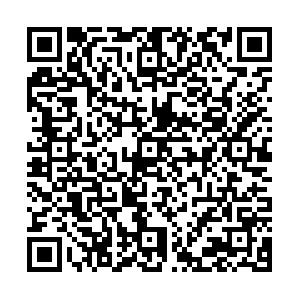Effect of Childhood Abuse on Non-suicidal Self-injury in Adolescents with First-episode Depression
-
摘要:
目的 探讨儿童期虐待对青少年首发抑郁症患者的非自杀性自伤行为(non-suicidal self-injury,NSSI)的影响。 方法 纳入2022年1~8月在云南省精神病医院住院治疗的136例12~18岁的抑郁症患者,使用一般人口学问卷、青少年非自杀性自伤行为问卷、儿童期创伤问卷进行调查。根据近1 a NSSI存在与否,分成NSSI组和无NSSI组,比较组间差异。儿童期虐待对NSSI的影响使用Logistic多因素回归。 结果 与无NSSI组比较,NSSI组的情感虐待、情感忽视发生率更高,差异有统计学意义(P < 0.05);Logistic多因素回归分析示,在校正性别、受教育程度、父母是否离异、精神病家族史后,情感虐待与青少年抑郁症患者NSSI显著正相关(OR = 3.015,95%CI:1.200~7.578);情感忽视与NSSI显著正相关(OR = 2.446,95%CI:1.089~5.496)。 结论 情感虐待、情感忽视与NSSI密切相关。 Abstract:Objective To explore the effects of childhood abuse on Non-suicidal Self-injury(NSSI) in patients with first-episode adolescent depression in the Yunnan Provincial Psychiatric Hospital. Methods A total of 136 depressed patients aged 12 to 18 years hospitalized in our hospital from January to August 2022 were included, and the general demographic questionnaire, Adolescent non-suicidal self-injury behavior questionnaire, and Childhood Trauma Questionnaire were used. The patients were divided into NSSI group and non-NSSI group according to the presence or absence of NSSI behavior in the past and the investigation results were compared between the two groups. Multivariate logistic regression analysis was used to analyze the impact of childhood maltreatment on NSSI. Results Compared with the non-NSSI group, the incidence of emotional abuse and emotional neglect in the NSSI group were higher, and the differences were significant (P < 0.05). After adjusting for gender, education, parental divorce, and family history of mental illness, emotional abuse and emotional neglect were significantly positively associated with NSSI (OR = 3.015, 95%CI: 1.200~7.578; OR = 2.446, 95%CI: 1.089~5.496). Conclusion Emotional abuse, emotional neglect are strongly associated with NSSI. -
Key words:
- Depressive disorders /
- Non-suicidal self-injury /
- Childhood abuse /
- Adolescent
-
表 1 2组一般资料比较[n(%)/(
$ \bar x \pm s $ )]Table 1. Comparison of general data between two groups [n(%)/(
$ \bar x \pm s $ )]变量 类别 NSSI组(n = 89) 无NSSI组(n = 47) t/χ2 P 年龄(岁) 18.17±4.45 16.58±5.38 1.782 0.345 性别 男 22(24.7) 16(34.0) 1.328 0.249 女 67(75.3) 31(66.0) 受教育程度 初中及以下 51(57.3) 21(44.7) 1.967 0.161 初中以上 38(42.7) 26(55.3) 父母是否离婚 是 16(18.0) 6(12.8) 0.616 0.433 否 73(82.0) 41(87.2) 家族史 是 25(28.1) 8(17.0) 2.051 0.152 否 64(71.9) 39(83.0) 表 2 2组患者的儿童期虐待亚型的比较[n(%)]
Table 2. Comparison of subtypes of childhood abuse between the two groups [n(%)]
项目 NSSI组(n = 89) 无NSSI组(n = 47) t/χ2 P 情感虐待 无 47(52.8) 36(76.6) 7.317 0.007* 有 42(47.2) 11(23.4) 躯体虐待 无 63(70.8) 37(78.7) 0.996 0.318 有 26(29.2) 10(21.3) 性虐待 无 74(83.1) 41(87.2) 0.394 0.530 有 15(16.9) 6(12.8) 情感忽视 无 36(40.4) 29(61.7) 4.445 0.018* 有 53(59.6) 18(38.3) 躯体忽视 无 52(58.4) 32(68.1) 1.215 0.270 有 37(41.6) 15(31.9) *P < 0.05。 表 3 青少年首发抑郁症患者NSSI行为的影响因素的Logistic 回归分析
Table 3. Logistic regression analysis of influencing factors of NSSI behavior in adolescents with first-episode depression
因素 偏回归系数 标准误 Wald χ2 OR值(95%CI) P 性别 −0.185 0.430 0.184 0.831 (0.358~1.930) 0.668 受教育程度 0.650 0.398 2.660 1.915 (0.877~4.182) 0.103 父母是否离异 −0.054 0.604 0.008 0.947 (0.290~3.095) 0.929 家族史 −0.688 0.516 1.780 0.503 (0.183~1.381) 0.182 情感虐待 1.104 0.470 5.511 3.015 (1.200~7.578) 0.019* 躯体虐待 −0.577 0.435 1.760 0.561 (0.239~1.317) 0.185 性虐待 0.034 0.490 0.005 1.034 (0.396~2.704) 0.945 情感忽视 0.895 0.413 4.691 2.446 (1.089~5.496) 0.030* 躯体忽视 0.013 0.444 0.001 1.013 (0.424~2.420) 0.977 *P < 0.05。 -
[1] 王智雄,刘靖,李雪,等. 青少年抑郁症患者的健康相关危险行为[J]. 中国心理卫生杂志,2021,35(4):300-305. doi: 10.3969/j.issn.1000-6729.2021.04.006 [2] Nemeroff C B. Paradise lost:The neurobiological and clinical consequences of child abuse and neglect[J]. Neuron,2016,89(5):892-909. doi: 10.1016/j.neuron.2016.01.019 [3] Ding X,Yao J. Peer education intervention on adolescents' anxiety,depression,and sleep disorder during the COVID-19 pandemic[J]. Psychiatr Danub,2020,32(3-4):527-535. doi: 10.24869/psyd.2020.527 [4] Wang Y J,Li X,Ng C H,et al. Risk factors for non-suicidal self-injury (NSSI) in adolescents: A meta-analysis[J]. E Clinical Medicine,2022,46(4):101350. [5] 王丹,李旸,王威,等. 儿童期虐待对青少年心境障碍患者非自杀性自伤行为的影响[J]. 神经疾病与精神卫生,2022,22(2):83-88. doi: 10.3969/j.issn.1009-6574.2022.02.002 [6] Zetterqvist M. The DSM-5 diagnosis of nonsuicidal self-injury disorder: A review of the empirical literature[J]. Child Adolesc Psychiatry Ment Health,2015,9(1):31. doi: 10.1186/s13034-015-0062-7 [7] 刘联琦,周平,郝军锋,等. 精神分裂症抑郁症状的识别与诊断: 四种抑郁量表的比较[J]. 神经疾病与精神卫生,2012,12(1):30-33. doi: 10.3969/j.issn.1009-6574.2012.01.010 [8] 万宇辉,刘婉,郝加虎,等. 青少年非自杀性自伤行为评定问卷的编制及其信效度评价[J]. 中国学校卫生,2018,39(2):170-173. doi: 10.16835/j.cnki.1000-9817.2018.02.005 [9] Polick C S,Polick S R,Stoddard S A. Relationships between childhood trauma and multiple sclerosis: A systematic review[J]. Journal of Psychosomatic Researc,2022,160(9):110981. [10] 陆心传,朱峰,刘艳秋,等. 伴与不伴非自杀性自伤抑郁症青少年的冲动和自我意识对照研究[J]. 精神医学杂志,2018,31(5):325-327. doi: 10.3969/j.issn.2095-9346.2018.05.002 [11] Du N,Ouyang Y,Xiao Y,et al. Psychosocial factors associated with increased adolescent non-suicidal self-injury during the COVID-19 pandemic[J]. Front Psychiatry,2021,12(12):743526. [12] 孙茜,李玉龙,叶兰仙,等. 青少年非自杀性自伤风险因素和发病机制的研究进展[J]. 新医学,2023,54(1):17-21. [13] Kharsati N,Bhola P. Self-injurious behavior,emotion regulation,and attachment styles among college students in India[J]. Ind Psychiatry J,2016,25(1):23-28. doi: 10.4103/0972-6748.196049 [14] Liu R T,Scopelliti K M,Pittman S K,et al. Childhood maltreatment and non-suicidal self-injury: A systematic review and meta-analysis[J]. Lancet Psychiatry,2018,5(1):51-64. doi: 10.1016/S2215-0366(17)30469-8 [15] Steine I M,Nielsen B,Porter P A,et al. Predictors and correlates of lifetime and persistent non-suicidal self-injury and suicide attempts among adult survivors of childhood sexual abuse[J]. Eur J Psychotraumatol,2020,11(1):1815282. doi: 10.1080/20008198.2020.1815282 [16] 徐雪芡,胡珍玉. 童年创伤与青少年非自杀性自伤的心理社会中介因素(综述)[J]. 中国心理卫生杂志,2022,36(12):1079-1083. [17] Zhang J J,Liu Y D,Zhang H,et al. Correlates of non-suicidal self-injury in adolescent psychiatric patients in China[J]. Front Psychiatry,2022,13(6):864150. [18] Herzberg M P,Gunnar M R. Early life stress and brain function: activity and connectivity associated with processing emotion and reward[J]. Neuroimage,2020,209(4):116493. [19] Ernst M,Brähler E,Kampling H,et al. Is the end in the beginning? Child maltreatment increases the risk of non-suicidal self-injury and suicide attempts through impaired personality functioning[J]. Child Abuse Negl,2022,133(11):105870. [20] Kaufman J,Torbey S. Child maltreatment and psychosis[J]. Neurobiol Dis,2019,131(2):104378. [21] 陆林. 守护儿童青少年心理健康,我们在行动[J]. 科技导报,2021,39(18):1. [22] 徐莉,赵锦涵,金于雄,等. 青少年抑郁症患者非自杀性自伤的相关因素[J]. 昆明医科大学学报,2022,43(5):58-64. [23] Taliaferro L A,Almeida J,Aguinaldo L D,et al. Function and progression of non-suicidal self-injury and relationship with suicide attempts: A qualitative investigation with an adolescent clinical sample[J]. Clin Child Psychol Psychiatry,2019,24(4):821-830. doi: 10.1177/1359104519862340 [24] 林信竹,况利. 辩证行为疗法联合舍曲林药物治疗对伴非自杀性自伤抑郁症青少年的疗效[J]. 国际精神病学杂志,2021,48(3):439-442,465. doi: 10.13479/j.cnki.jip.2021.03.016 [25] 张畅,廖小利,欧建君,等. 辩证行为疗法治疗非自杀性自伤行为研究进展[J]. 新乡医学院学报,2022,39(12):1187-1191. [26] 苏晓云,贺继平,张晓宇,等. 辩证行为疗法在非自杀性自伤青少年中的应用[J]. 护理研究,2022,36(21):3922-3925. -







 下载:
下载: 
